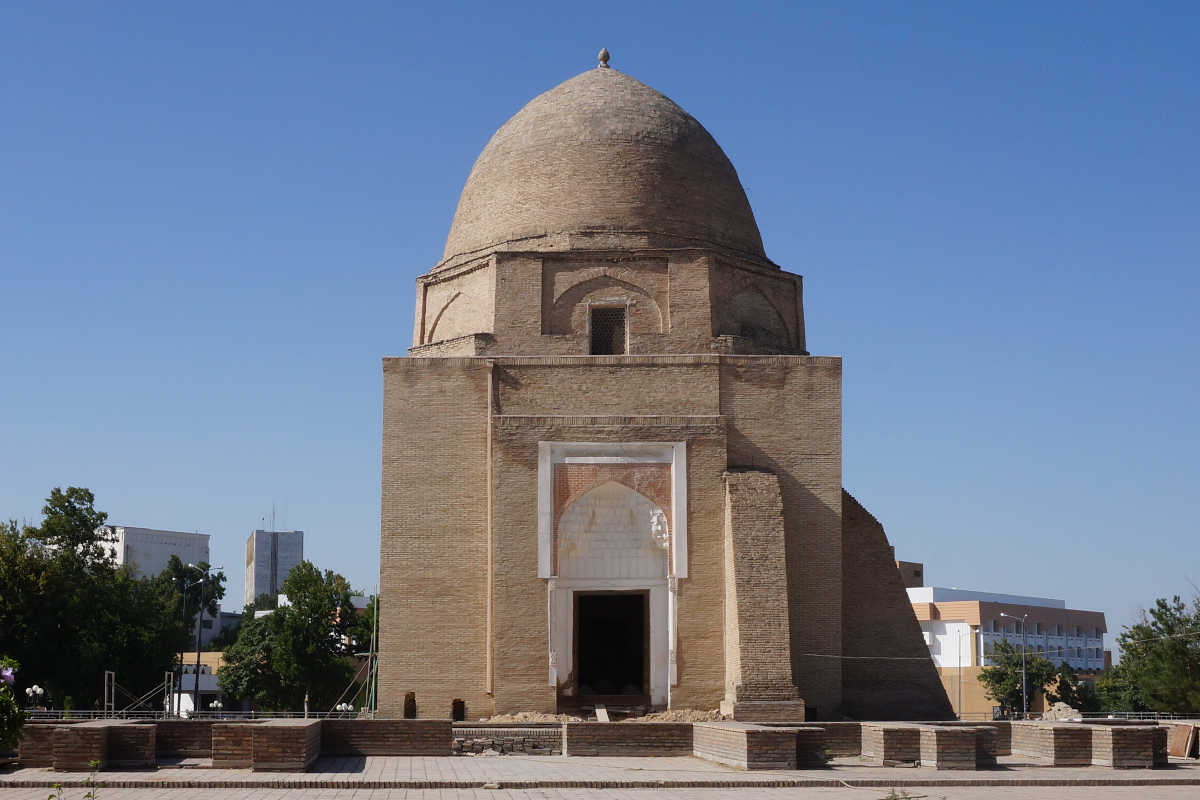Samarkand - the Ruhabad Mausoleum
North of Gur Emir Mausoleum there is a Mazar (mausoleum) built over the tomb of the mystic Burhaniddin Sagarji who died in the XIV century. The exact date of construction of this Mausoleum in Samarkand, known as Ruhabad (“dwelling place of the spirit”), has not been determined.

Due to the nature of the relief tile ornaments around the relocated north door, some researchers date this Mazar to the second half of the XIV century, while others consider it to be a Temur construction from the 1980s of the XIV century.
Monumental brick building with a dome with a central composition: a cube, octagon with windows on the main axes, spherical dome. The main façade is highlighted by arched entrances framed with tiles in carved terracotta.
In 1952, ring anchors were installed here to reinforce Ruhabad Mausoleum and the ceiling was repaired. The sons of Sheikh Abu Sa’id, Sheikh Isom al-Din and other members of the Sagarji family, especially the “Chinese princess” of Sheikh Sagarji’s wife, are buried there.
Abu Sa’id, Sheikh Isom al-Din was (according to the Arab traveller Ibn Batuta) the Central Asian sheikh (head) of the Muslims in Beijing. When he died, his son brought him to Samarkand and, according to his father’s will, he was buried near the tomb of the Sheikh of Samarkand Sheikh Basir.
According to a legend, under the dome of the mausoleum there is a hiding place with seven hairs of the Prophet Muhammad. Next to the Ruhabad Mausoleum in Samarkand there is a summer mosque, the decoration of which was influenced by East Turkestan or Chinese traditions.
